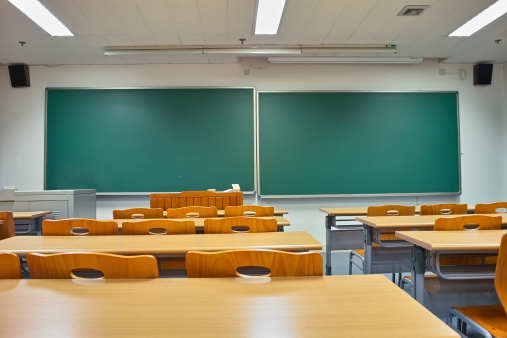With one more month until a new school year begins for elementary and secondary school students in Ontario, concerns are being raised towards the province’s back-to-school plan amid the novel coronavirus pandemic.

On Thursday, the Ontario government announced that once September comes, elementary students will be in the classroom five days a week while most secondary students will be in at least 50 per cent of the time.
Other health and safety protocols that will be put in place include self-screening for students prior to entering school or a school bus, mandatory masking for students in grades 4 to 12, providing medical masks for teachers and staff, and cohorting.

“One of the challenges we have in the elementary school panel (is) that our classes are big,” said Craig Smith, the president of the Elementary Teachers Federation of Ontario (ETFO) Thames Valley.
Smith joined 980 CFPL’s Devon Peacock on The Morning Show Friday to express ETFO Thames Valley’s concerns.
“The anxiety (is) we have kindergarten classes that hover around 30 students, primary classes can jump up to about 23 kids, junior grades, 28 to 29, and our intermediate classes, anywhere from 30 to 35 kids.”
Other than large class sizes, keeping at least two metres apart is another worry, according to Smith.
Having enough funding is also a major concern.
“Yes, the government has provided some additional funding but funding is probably not up to the task (for) the board to do the things that need to be done in terms of class sizes and some of the other safety protocols,” said Smith.
Sam Oosterhoff, the parliamentary assistant to Education Minister Stephen Lecce, also joined 980 CFPL’s Devon Peacock on The Morning Show Friday to address the concerns.

Get breaking National news
Oosterhoff, who deemed Ontario’s back-to-school plan “extensive, detailed and science-based,” reassured that enough funding will be provided.
The Ontario government announced in mid-July that they’re investing $736 million in public education for the 2020-21 school year, increasing the total to more than $25.5 billion.
“This is the most any Ontario government has spent on education, and it’s focused on the key areas we’ve heard from our chief medical officer and their team,” said Oosterhoff.
“We’re hiring 500 new school new nurses, 1,200 custodial staff, as well as putting in place cleaning supplies and masking.”

Besides funding, another major concern raised by Smith was in regards to masks, and how it’s mandatory for certain grades.
“The requirement for masks is a good thing, but the challenge I think we’ll have it is that students in (grades) 4 to 8 will be required to wear a mask (and so will) teachers, but students in kindergarten to grade 3 won’t be.”
“Also, we will have teachers (with) underlying medical conditions that will prevent them from being in schools. The broader question will be, (what will) teaching and learning look like?” said Smith.
The mental health of children through the pandemic has been another key topic of discussion.
“Data is saying that children (are) profoundly affected by the impacts of the pandemic,” said Kim Moran, the CEO of Children’s Mental Health Ontario.
“That really points to the fact that we have to have the resources and support in place for their mental health, and to help their parents as well.”
Moran told 980 CFPL’s Devon Peacock on The Morning Show Friday that anxiety is the most common mental health issue “even without a pandemic, so that is still the number one issue.”

“Anxiety goes hand in hand with depression, so we’re seeing both.”
“The impact of social isolation on kids is really profound, and we have to help kids navigate through this really unknown territory. … We also know that more vulnerable kids are going to be more affected,” said Moran.
Once the school year officially begins, 24 school boards, including the Thames Valley District School Board and the London District Catholic School Board, will adopt a hybrid learning model for high school students while the rest will be permitted to open with daily attendance for high schoolers.
Parents are allowed to keep their children at home and learn entirely online if they’re concerned with the possibility of their children being exposed to COVID-19.













Comments